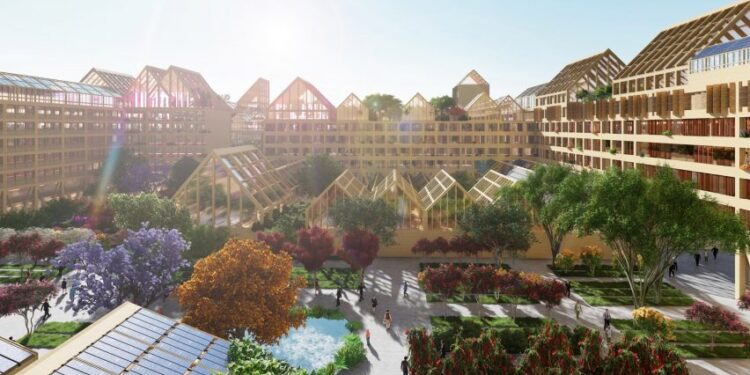In the city of Xiong’an in China will rise the first completely energy self-sufficient district: the project is entrusted to a Spanish team.
The long wave of the Coronavirus emergency “hits” also the urban planning. In recent months, the Covid-19 has changed the lives, habits and working methods of all the inhabitants of the Planet. Now the pandemic has begun to “transform” the appearance of cities as well. The news comes directly from China, the first epicenter of the pandemic. The Chinese government has in fact started the construction of an innovative residential complex in the Chinese city of Xiong’an, in Hebei Province. The peculiarity is that the neighborhood will be completely self-sufficient from the energy point of view. The buildings will be built of wood and covered with greenhouses that will allow to grow fruit and vegetables for daily consumption, produce electricity (thanks to solar panels) and collect rainwater. On the ground floor, small digital factories with 3D printers and rapid prototyping machines will allow the production of everyday objects for the inhabitants of the neighborhood. Each building will therefore have an “internal metabolic system” that will integrate energy production, water recycling, food production and the recovery of unused materials.
You might also be interested in —> Ecocapsule: the miniature house that you can buy online
China: the first eco-sustainable, self-sufficient and smart city
The project was entrusted to the Spanish firm Guallart Architects. “We cannot continue to design buildings and cities as if nothing had happened,” said founder Vicente Guallart. “Our proposal stems from the need to provide solutions to the various crises that are occurring simultaneously on our planet, in order to create a new urban life based on the circular bioeconomy. Precisely for this reason, the apartments in the new neighborhood will include design solutions designed specifically for smart working. For example, there will be rooms with windows exposed to the sun to allow workers to benefit from natural light throughout the day. In addition, the apartments will be connected to the 5G network and have a large south-facing terrace: this outdoor space will be critical during any future lockdown periods, allowing residents to play, rest and work outdoors. According to Chinese government estimates, the self-sufficient city should be completed by 2050.
Read also —> Apple is betting on wind power: will build two of the world’s largest turbines

































